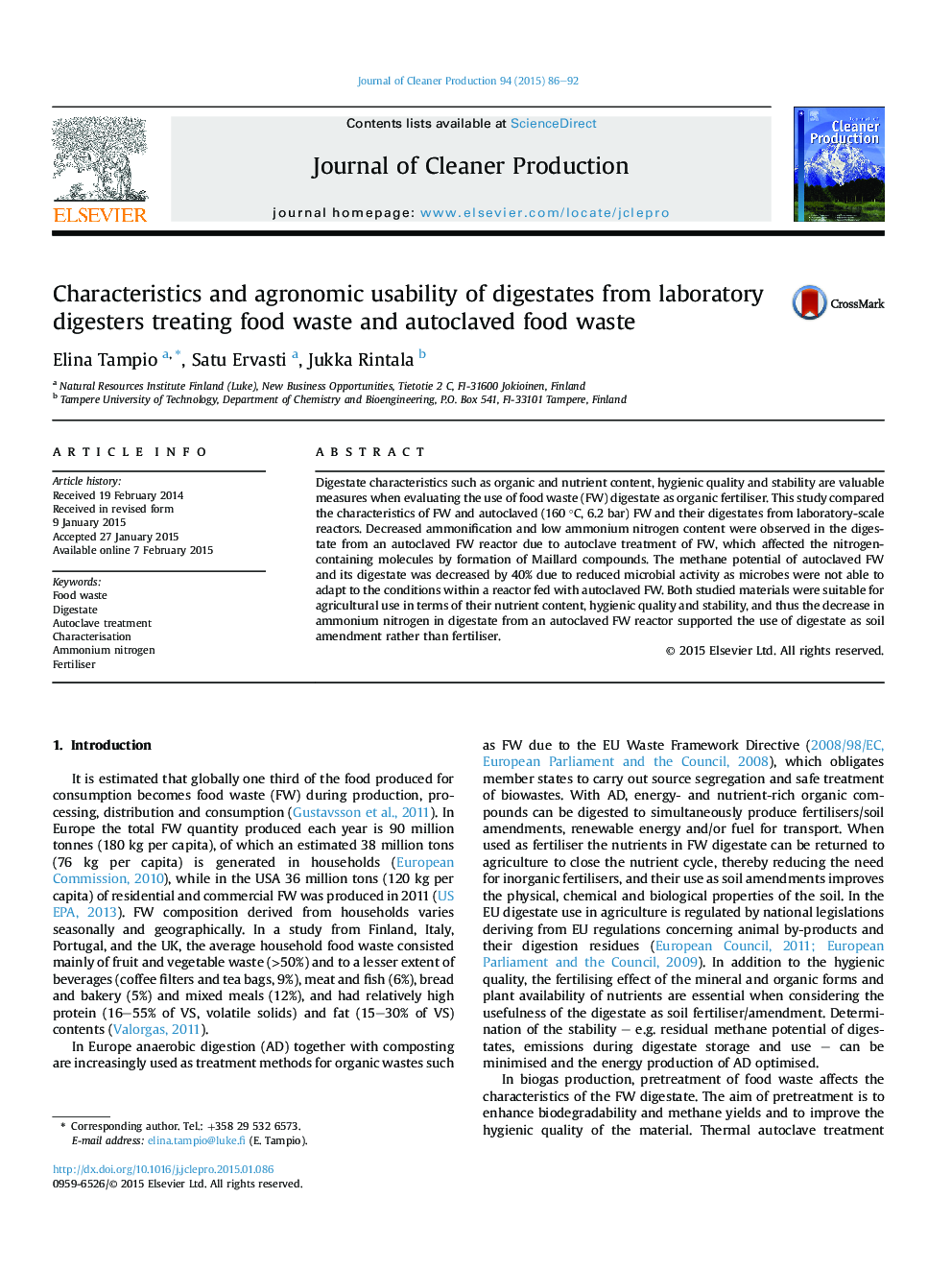| Article ID | Journal | Published Year | Pages | File Type |
|---|---|---|---|---|
| 8104547 | Journal of Cleaner Production | 2015 | 7 Pages |
Abstract
Digestate characteristics such as organic and nutrient content, hygienic quality and stability are valuable measures when evaluating the use of food waste (FW) digestate as organic fertiliser. This study compared the characteristics of FW and autoclaved (160 °C, 6.2 bar) FW and their digestates from laboratory-scale reactors. Decreased ammonification and low ammonium nitrogen content were observed in the digestate from an autoclaved FW reactor due to autoclave treatment of FW, which affected the nitrogen-containing molecules by formation of Maillard compounds. The methane potential of autoclaved FW and its digestate was decreased by 40% due to reduced microbial activity as microbes were not able to adapt to the conditions within a reactor fed with autoclaved FW. Both studied materials were suitable for agricultural use in terms of their nutrient content, hygienic quality and stability, and thus the decrease in ammonium nitrogen in digestate from an autoclaved FW reactor supported the use of digestate as soil amendment rather than fertiliser.
Related Topics
Physical Sciences and Engineering
Energy
Renewable Energy, Sustainability and the Environment
Authors
Elina Tampio, Satu Ervasti, Jukka Rintala,
